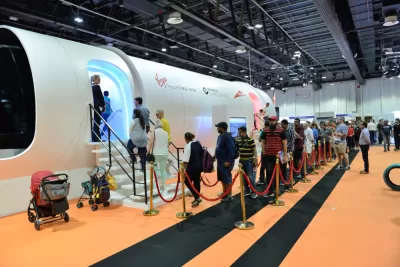New mobility modes and services have tantalizing potential, but they can also impose significant costs and risks. We need objective and comprehensive analysis to determine how—and how not—to incorporate these new technologies.

When shopping for a car, you’ll find numerous websites and guides that provide detailed information on their costs and performance, plus ratings and reviews. However, there is much less data about emerging transportation technologies and services that are poised to affect our lives and communities, like e-bikes, ride-hailing, and even futuristic but not far off technologies like pneumatic tube trains, autonomous cars and drones. Information about those technologies is often incomplete, speculative and biased.
These new mobility modes and services, or “new mobilities,” have tantalizing potential. They may allow people to scoot, ride and even fly like never before. However, they can also impose significant costs and risks. We need objective and comprehensive analysis to determine whether they should they be mandated, encouraged, regulated, restricted or forbidden.
A little skepticism is appropriate. Advocates offer images of happy passengers traveling in sleek, fast vehicles, but the reality may be very different. New travel modes and services are often less comfortable and more costly than proponents claim. Ridership, revenues and benefits may be much smaller than optimists predict, and they may make many people worse off overall. For example, autonomous taxi passengers may find garbage and odors left by previous occupants; flying cars can create significant noise, safety and privacy problems; and you may want to shoot down the drones delivering pizza and beer to your neighbor’s late-night party.
This is a timely issue. In the future, households and communities will face countless decisions concerning how to incorporate emerging mobility technologies and services. It is important to make those decisions based on comprehensive analysis. We can’t evaluate each new mobility in the confines of this column, but in a new book, New Mobilities: Smart Planning for Emerging Transportation Technologies, I offer a framework for undertaking a thoughtful analysis.
FULL STORY: Pneumatic Tube Trains and AVs to the Rescue? Smarter Planning for New Mobility

Trump Administration Could Effectively End Housing Voucher Program
Federal officials are eyeing major cuts to the Section 8 program that helps millions of low-income households pay rent.

Planetizen Federal Action Tracker
A weekly monitor of how Trump’s orders and actions are impacting planners and planning in America.

Ken Jennings Launches Transit Web Series
The Jeopardy champ wants you to ride public transit.

Opinion: Transit Agencies Must View Service Cuts as Last Resort
Reducing service could cripple transit systems by pushing more riders to consider car ownership, making future recovery even less certain.

‘Smart Surfaces’ Policy Guide Offers Advice for Building and Maintaining Urban Tree Canopies
Healthy, robust tree canopies can reduce the impacts of extreme heat and improve air quality.

New Jersey Lawsuit Targets Rent-Setting Algorithms
The state of New Jersey is taking legal action against landlords and companies that engage in what the state’s Attorney General alleges is illegal rent fixing.
Urban Design for Planners 1: Software Tools
This six-course series explores essential urban design concepts using open source software and equips planners with the tools they need to participate fully in the urban design process.
Planning for Universal Design
Learn the tools for implementing Universal Design in planning regulations.
Heyer Gruel & Associates PA
Ada County Highway District
Institute for Housing and Urban Development Studies (IHS)
City of Grandview
Harvard GSD Executive Education
Toledo-Lucas County Plan Commissions
Salt Lake City
NYU Wagner Graduate School of Public Service


























